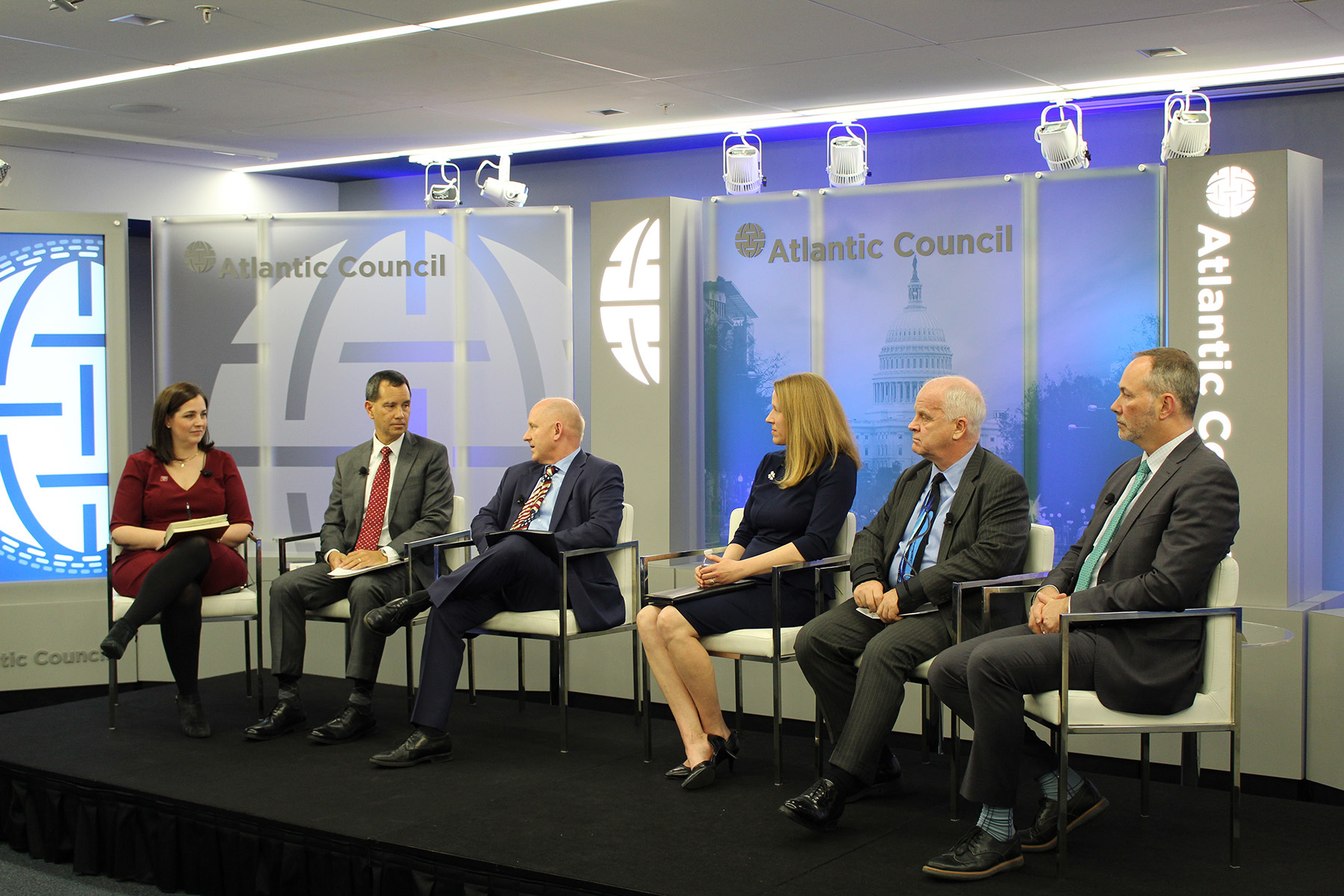The Ukrainian military’s ability to gain access to near-persistent surveillance of their territory in their fight against Russia represents a game-changing capability in land warfare, according to a new issue brief released by the Atlantic Council think tank.
I was honored to be one of the industry experts who supported development of the report—authored by Dr. Thomas “TX” Hammes, Distinguished Research Fellow at the National Defense University’s Institute for National Strategic Studies—and to join a panel of national security professionals at the Atlantic Council on April 3 for a moderated discussion of lessons learned after a year of ground combat in Ukraine.
Here are a few key takeaways from the brief.
Earth observation brought transparency to the battlefield and to the world, before the fighting began. “The availability of commercial satellite imagery and satellite data has made it more difficult for disinformation campaigns to be successful,” writes Hammes. “Maxar and other satellite data providers fundamentally changed the framing of the conflict, effectively disproving Russia’s justification for the war and exposing its forces’ most atrocious actions.”
The evolution and scaling of satellite imagery systems is a game changer. Commercial space imaging resources have complemented government space capabilities in Ukraine, enabling unclassified global sharing and massively increasing coverage. “Earth observation from space-based visual, infrared, radar and electromagnetic sensors is available virtually continuously,” notes Hammes. "Commercial satellite companies target the commercial market, so they emphasize customer-oriented, automated processes from request to delivery of an interpreted product. While these firms can provide raw imagery or data, the companies also have developed change detection software to facilitate providing finished intelligence products.”
The commercial sector remains a key source of technology and innovation. “Most of the technologies driving this change were derived from commercial developments and thus will advance more rapidly than most government projects. Today, commercial firms drive the bulk of investment" into areas including satellite surveillance, writes Hammes, who concludes that “pervasive surveillance requires integrating the exponentially expanding commercial multispectral, radar, and electromagnetic surveillance systems into [US] combat systems.”

Photo: Atlantic Council
While the issue brief focused on distilling lessons learned thus far from the war in Ukraine, I also want to share a few implications for the future.
The future is multisource. Decision-makers now need and want rapid access to multiple sources of information, which is why Maxar has begun to incorporate synthetic aperture radar (SAR) and radio frequency (RF) capabilities to ensure 24/7 all-weather observation of Earth, as well as to allow us to observe activity around the world through use of the RF spectrum. We also are in the process of transforming our 20-year archive of high-resolution electro-optical imagery into a geospecific 3D map of the world that not only reflects the terrain in all dimensions but also provides an accurate foundation for additional data sources.
Access to unclassified commercial data strengthens international collaboration. One of the reasons commercial imagery has been a game changer is that it is inherently unclassified and shareable. Therefore, it is complementary to well-protected government capabilities because commercial data—appropriately licensed—can be shared with, and between, the U.S. and its allied partners with few limitations or delays. This is particularly important in enabling rapid sensor-to-decision processes for multinational coalitions that are operating in dynamic, heterogeneous information environments. This is an important factor to consider as the U.S. continues to work out its Joint All-Domain Command and Control (JADC2) architecture. The architecture should start with unclassified, widely sharable information and it must be flexible enough to incorporate and integrate unclassified data sources and enable the participation of a wide array of international partners.
Geospatial data won’t analyze itself. In Ukraine, we have seen the continuation of an evolving trend: decision advantage on the battlefield is no longer dictated primarily by who has dominant collection and data acquisition capabilities. We now collect so much data that the advantage is given to those who can integrate and digest masses of multisource data quickly and efficiently to generate, share and act on insights faster than the adversary. While Maxar and our peers are making great strides at applying machine learning against large data models to increase the speed and capacity of analysis and delivery, such work is still heavily dependent on humans who are experts in processing, exploitation and dissemination (PED). This is a challenge impacting industry and government alike and requires a larger talent pool, not just faster processors.
Understanding the Game-Changing Role of Commercial Imagery in Ukraine
Earth observation satellites bring transparency to the battlefield
Learn More About Maxar’s Defense Solutions